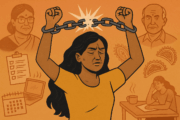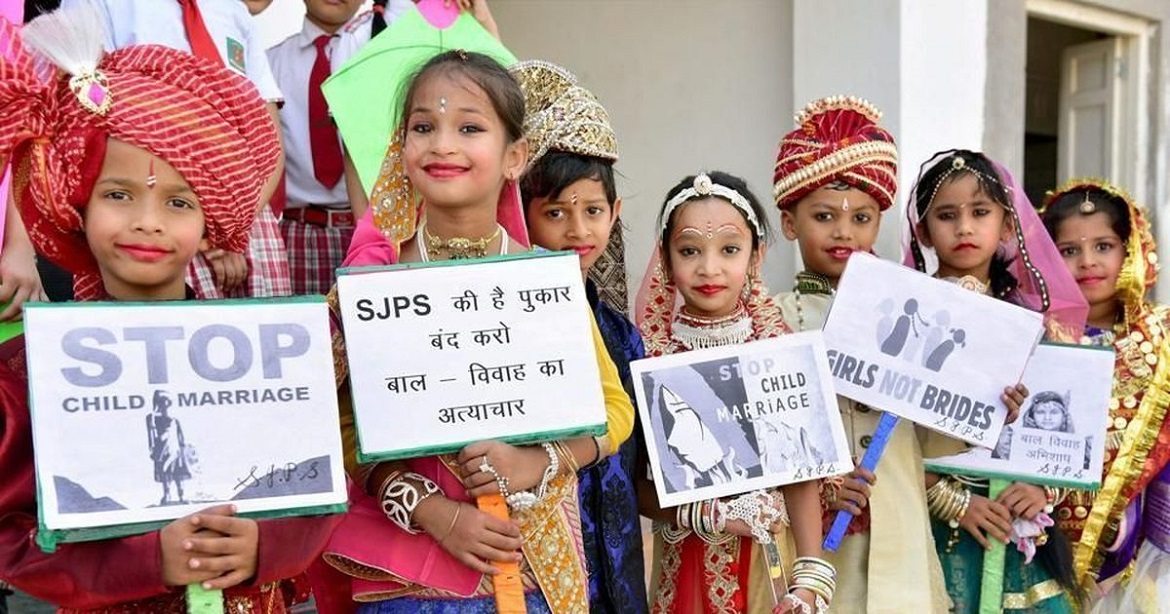While in the midst of Women’s History Month, we take a closer look at child marriage. This deeply rooted (and controversial) practice seen by some as cultural and/or religious is being tackled worldwide in order to protect the rights of women and girls. In South Asia, the decline of child marriages are most prevalent in India. We take a closer look at what India is doing right and how the rest of the world can learn from India’s success.
At the Girls Summit in 2014, held by the UK and UNICEF, there was a call-to-action and commitment made to strengthen local and global endeavours to stop child marriages, in all capacities, by 2030. It was determined that this sordid issue needs vigorous attention and efforts in order to be abolished as it ultimately infringes on the rights of a child and effectively robs them of their chance to be a child.
In addition, being part of a child marriage puts a child in situations they are neither physically or psychologically ready for, which can have serious consequences, “ranging from high infant and child mortality and sexual and reproductive health complications, to dropping out of school, domestic violence, social isolation and entrenched poverty.”

As of 2016, research showed at least “15 million girls are married, [annually], before…18.” This practice perpetuates gender inequality and reinforces deep-seated”discriminatory social norms, poverty, lack of education [and] misplaced perceptions of providing protection for girls during a time of increased instability when girls are at a higher risk of physical or sexual abuse.”
In the end, keeping young girls from exercising their right to accessing proper healthcare, education, and equality limits their ability to exit the “cycle of poverty,” making it more likely that their children will be ensnared by the same future. As such, to combat this practice around the world, including in South Asia, steps have been taken to help meet the deadline in 2030.

In fact, in South Asia, child marriage has decreased significantly over the past decade, whereby the chance of a young female being married prior to 18 “has dropped by more than a third, from nearly 50 percent to 30 percent.” Much of the credit for this reduction is due to the work being done in India. For instance, the combination of lobbying and consequent amendments to existing laws further criminalizing child marriage, as well as social work being done at the grassroots level, has ultimately had positive results. However studies also show that Sri Lanka — even though their rates are low — still much work needs to be done (with high rates of child marriages still happening in some Sri Lankan communities) in terms of working towards eliminating child marriages.
To provide context, India’s Prohibition of Child Marriage Act has attributed a fine of “100,000 rupees (approximately $2,023) and two years in prison for parents who are caught trying to marry off their underage children.” The Act also depicts that the legal age of marriage for men and women in India is 21 and 18, respectively.
Nonetheless, there was an exception allowing “…for intercourse between a man and wife who is between 15 and 18” to not be deemed as rape or marital rape, which is inconsistent with the legal age of marriage for women. However, following a petition headed by Independent Thought in 2017, India’s Supreme Court concluded that “…the age of consent was 18 for “all purposes.“”

There has also been a push to change the Act so that child marriages are no longer viewed as being valid or “void ab initio” altogether. Similarly, according to The New York Times, priests are also working with the government to do their part to prevent child marriages by being required to and signing off on marriage ceremonies they perform to confirm the couple are both legally able to marry. Of equal importance, additional “…access to education for women and increased public awareness on the negative impact of child marriage” has resulted in a decline from 47 percent to 27 percent of child marriages in India.
As Women’s History Month continues, it’s crucial to recognize India’s efforts as they #PressForProgress to abolish this deeply entrenched patriarchal norm by spreading awareness about the negative impacts of child marriage at the grassroots level. More importantly, though, it is vital to acknowledge and work to address the underlying factors that contribute to child marriage, such as poverty. Doing so may decrease the need or desire to rely on the practice, thus decreasing its occurrence.

With that said, although there are still child marriages occurring clandestinely, the fact that there has been a decline of child marriages in South Asia is a significant accomplishment worth celebrating. The results in India demonstrates that it is possible to challenge gender inequality and entrenched social norms in order to enable and empower young girls, ultimately illustrating that combatting and ending child marriage is possible.
Main Image Photo Credit: www.scroll.in
Devika Goberdhan | Fashion Editor
Author
Devika (@goberdhan.devika) is an MA graduate who specialized in Political Science at York University. Her passion and research throughout her graduate studies pushed her to learn about and unpack hot button issues. Thus, since starting at ANOKHI in 2016, she has written extensively about many challe...


















































































































